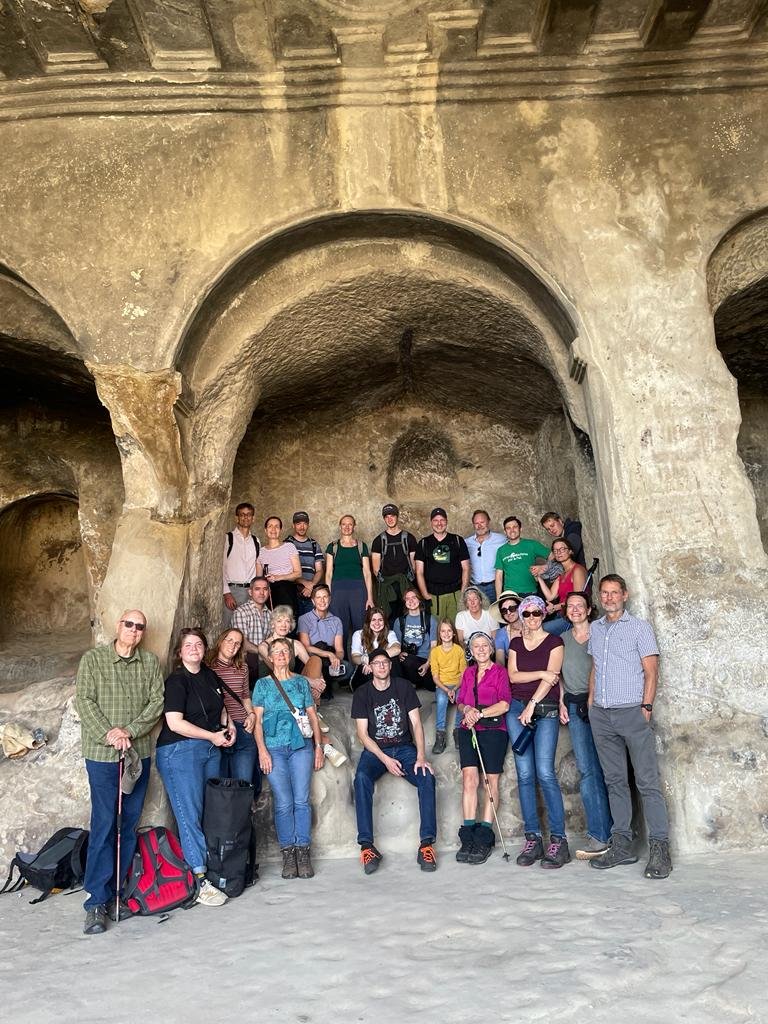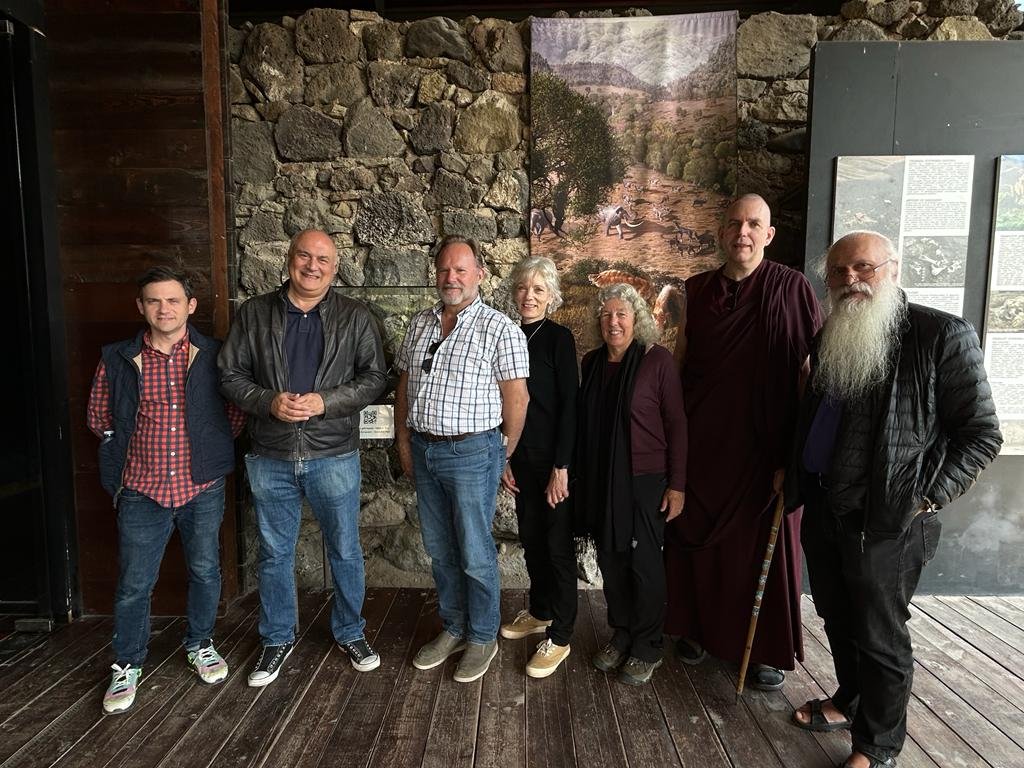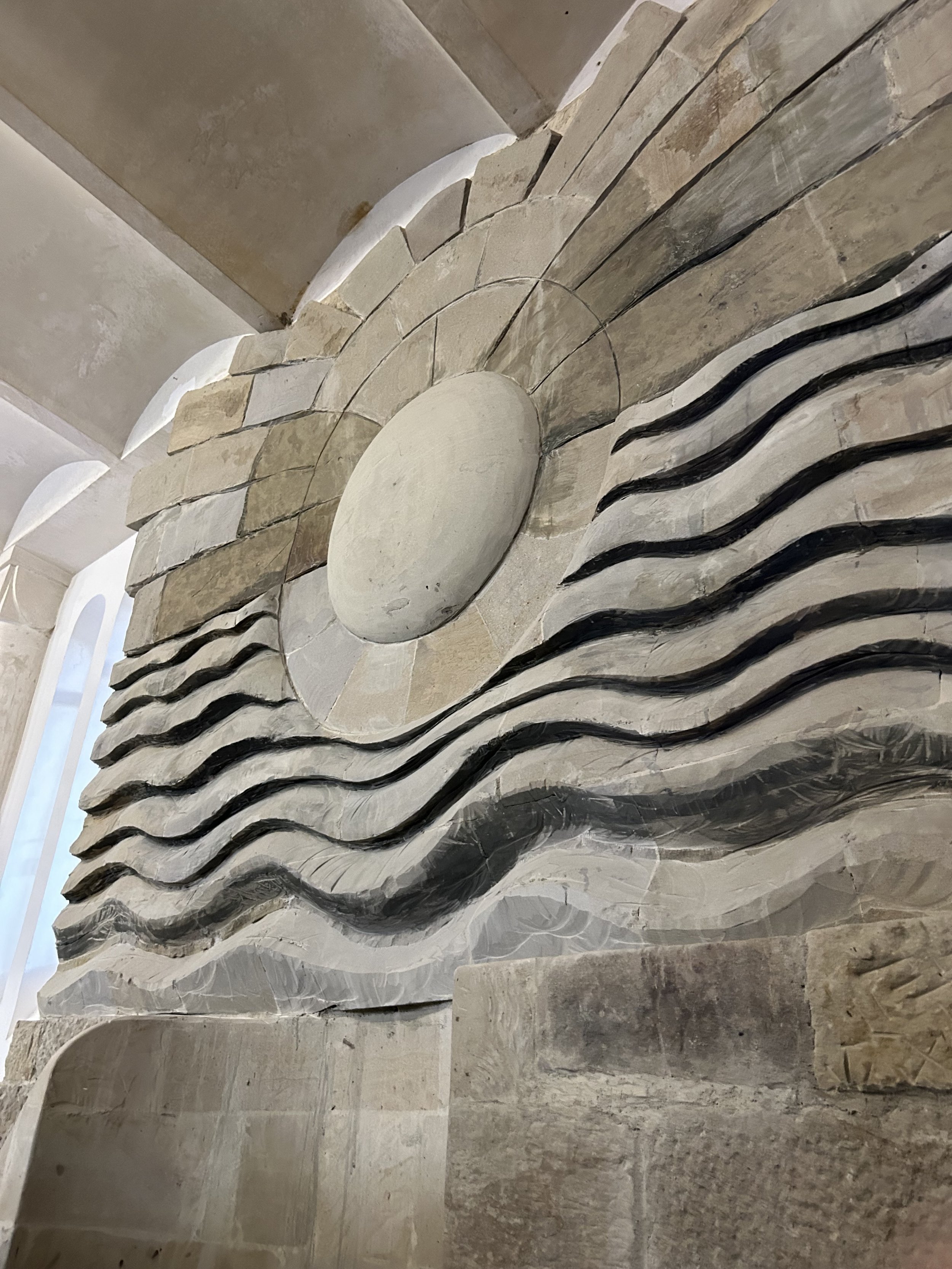Peace Cathedral Building Interfaith Cooperation
Following Malkhaz Songulashvili on a hike through the Caucasus mountains, one realizes that “trail guide” is yet another hat he wears. In November, the metropolitan bishop of the Evangelical Baptist Church of Georgia and pastor of the Peace Cathedral in Tbilisi welcomed an interfaith delegation of peacemakers, of which I was honored to be a part, to offer a blessing on this project for peace and justice.
Before we offered our blessings for the church, the Bishop led us on a 12-kilometer hike. He wore sandals.
As our group of Canadian, Dutch, Georgian, German, and U.S. American peacemakers trekked across the mountain ridge, we each picked up a stone and held it in our hands. Keeping silence as we walked, Malkhaz invited us to consider how our stones represented something weighing us down.
According to Malkhaz, the best way to gain enemies is to work for peace. The leaders and laity of the Peace Cathedral know lots about these confrontations while working for peace. From being ostracized for their interfaith worship, ordaining women and men, taking in refugees from the wars in Syria, Iraq, and Ukraine, to embracing and affirming LGBTQ+ persons, this community is a tiny beacon of justice and peace in Tbilisi.
“The best way to gain enemies is to work for peace.”
Now, after years of construction and planning, the Peace Cathedral is coming into full fruition as a physical structure, extending its roof to shelter the Peace Mosque (Masjid as Salaam) and the Peace Synagogue (Beit Knesset HaShalom). Together, they form a unique space for people seeking God, known by different names, through different rituals.
The physical space housing the interfaith project expands the imagination. Approaching the building from the outside, it could be a warehouse or a nightclub. Graffiti-like neon wings dash up the sides of the front facade, inviting worshippers to lighten their loads and enter with a spirit of beauty and creativity.
Inside, stone walls surround worshippers in a way that connects back to ancient spaces of veneration and worship. Speaking with the chief architect of the space, Georgi Songulashvili, I learned that every detail in the sanctuary had a purpose and story. The walls behind the stone altar remain unfinished, symbolizing the work future generations must undertake. A pulpit rises in front of the Amos Wall, where a flowing relief rolls down with prophetic energy to bolster a preacher to deliver fiery words of justice and righteousness. The exquisite marble floors, quarried from mountains in Iran, were a donation to the interfaith project. Two pillars stand on either side of the altar reminding worshippers of the command to love God and neighbor. So much can be said about the beauty of the Cathedral’s sanctuary.
But beyond the nave, the beauty of this project becomes clearer. Flanking the apse are doors leading to the Peace Mosque and the Peace Synagogue. Each of these spaces has also been uniquely created to embrace diverse members of their faiths. We joined Imam Akbar Moghaddasi for afternoon prayers, and he explained to us that the mosque was created to be a space for Sunni and Shia worshippers. Across a short hallway, the Peace Synagogue is a space for Jews of many traditions to pray and hear the Torah read aloud. The Torah at Peace Synagogue was a gift from members of the German House of One, who were also present on this visit. The spaces of worship are all connected by a hallway and unified in a spirit of interfaith cooperation and dialogue.
We also visited the Crook Interfaith Library, honoring the tremendous work of peacemakers Roger and Mary Ruth Crook. The library is building a collection of resources from major religions including Buddhism, Christianity, Hinduism, Islam, Judaism, Yezidism, and Zoroastrianism.
Though the community is small and many do not know about its work, the Peace Cathedral has friends in surprising places. Weeks earlier, the Peace Cathedral hosted the Archbishop of Canterbury, Justin Welby. We wondered if perhaps even King Charles III would make the pilgrimage to the Cathedral one day.
“As peacemakers, we celebrate the victories of relationships, friendships, and solidarity in our shared journey toward peace.”
I was encouraged that other partners were present on our visit and have dedicated themselves to the Peace Cathedral’s success. Members of the Alliance of Baptists were present, and representative Paul Hayes announced that the Peace Cathedral was becoming an official member congregation of the denominational movement. Representatives of the House of One in Germany were also present for this visit. This community in Berlin is following in the path of the Peace Cathedral to construct a single house of worship for Jews, Christians, and Muslims.
We asked Malkhaz how he is still inspired to seek peace in confronting difficult moments and challenging times. “Bad things are usually followed by good things,” he remarked. While not downplaying the hard moments, he explained that when Moses left Egypt with the Hebrew people, it was heartbreaking. But he got to see God on the mountain and lead the people into a new destiny. The Prophet Muḥammad likewise left Mecca fleeing conflict, but found community in Medina. Christ followed a path all the way to a gnarly death on the cross, but resurrection followed.
Back on the mountain, we walked several more kilometers holding our stones. We finally stopped on a hilltop and formed a cairn, or small stone structure. With a view of the mountains, we took a moment to pray, and then enjoyed some food and beverage as we kindled new friendships. Holding little cups of chacha, or Georgian brandy, we raised our glasses, looked each other in the eye and spoke the Georgian toast of gaumarjos, or “victory to you.” As peacemakers, we celebrate the victories of relationships, friendships, and solidarity in our shared journey toward peace. Amen.











